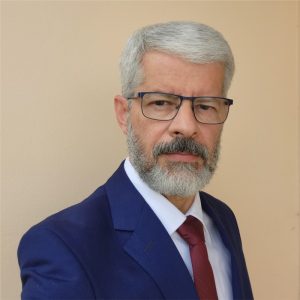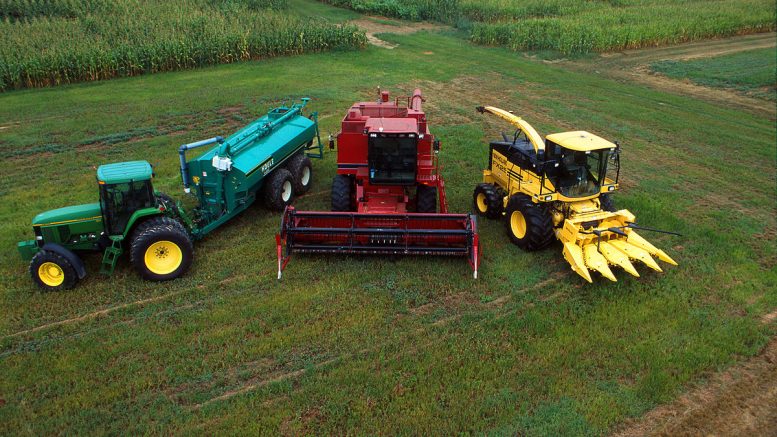“Os preços dos grãos continuaram baixos, teremos juros altos e expectativa de não haver aumento de área plantada…”
Pedro Estevão Bastos de Oliveira é presidente da Câmara de Máquinas Agrícolas da Associação Brasileira da Indústria de Máquinas e Equipamentos – Abimaq, diretor de relações institucionais da Jacto, formado em administração de empresas pela Univem-Marília.

Pedro Estevão, presidente da Câmara de Máquinas Agrícolas da Abimaq
AgriBrasilis – Qual o motivo da queda acentuada das vendas de máquinas agrícolas?
Pedro Estevão – Em 2024 o faturamento da Câmara de Máquinas Agrícolas da Abimaq caiu 20%. Essa queda é explicada por quatro fatores. O mais importante foi a seca severa que abateu a safra de verão 2023/24 em todo o Brasil, diminuindo a produtividade e a rentabilidade das lavouras, o que deprime investimentos.
O segundo fator que explica a queda do faturamento foi a diminuição dos preços das commodities agrícolas, principalmente dos grãos.
O terceiro fator foram os altos juros para compras financiadas. Apesar do plano safra ter juros menores, ele só durou 6 meses.
O último fator foi a área plantada, que não teve aumento substancial. Quando isso acontece, não temos mercado de expansão, apenas de reposição.
AgriBrasilis – Que categorias foram mais impactadas?
Pedro Estevão – Não há uma categoria específica de máquinas. O impacto é mais visível ao se avaliar as culturas: as máquinas para soja e milho foram as que tiveram as maiores quedas, justamente pelo menor preço verificado na safra 2023/24. Destaque para as colhedeiras de soja e milho, que apresentaram quedas de 60%.
AgriBrasilis – Quais as expectativas para 2025?
Pedro Estevão – Em 2025 as condições macroeconômicas não mudam muito. Os preços dos grãos continuam baixos, teremos juros altos e expectativa de não haver aumento de área plantada. A diferença é que teremos uma boa safra e o clima tem ajudado. Levando em conta esses fatores, esperamos aumento de 8% no faturamento do setor.
AgriBrasilis – Quando será necessária a renovação da frota brasileira?
Pedro Estevão – Parte da frota é renovada todo ano, em maior taxa quando a rentabilidade é maior e em menor taxa quando a rentabilidade agregada do setor é menor. Atualmente o parque de máquinas dos médios e pequenos agricultores está bem defasado, principalmente quando falamos das máquinas com tecnologia embarcada.
Os grandes agricultores têm uma frota mais moderna, porém a reposição nesse extrato é mais rápida pelo intenso uso anual das máquinas.
AgriBrasilis – Como está o cenário de acesso ao crédito para compra de máquinas?
Pedro Estevão – O principal problema do crédito são os juros altos. As linhas de financiamento para máquinas – o Moderfrota, o Moderfrota Pronamp e o Pronaf – têm juros de 11,5% 10,5% e 5% respectivamente, que são juros razoáveis na atual situação, porém duram apenas seis meses. Durante os outros seis meses, se o agricultor optar por financiar a máquina, o juro de mercado gira em torno de 16%, o que dificulta os negócios.
AgriBrasilis – Como a alta do dólar e os juros elevados estão impactando o setor?
Pedro Estevão – A alta do dólar é benigna para o setor agrícola, apesar de aumentar o custo dos insumos. O preço de vendas das commodities, que é o maior mercado de máquinas agrícolas, aumenta mais que os custos.
AgriBrasilis – Quais as inovações com relação à tecnologia embarcada e agricultura de precisão?
Pedro Estevão – O mercado vem trabalhando na direção de ter algoritmos inteligentes ou inteligência artificial para melhorar as decisões em tempo real das operações. As máquinas captam dados da própria operação, do meio ambiente e de banco de dados residentes nas máquinas ou fora delas, processam as informações e tomam decisões alterando em tempo real as operações. Isso melhora em muito a performance das máquinas no quesito operações e também nos quesitos agronômico e econômico.
LEIA MAIS:

